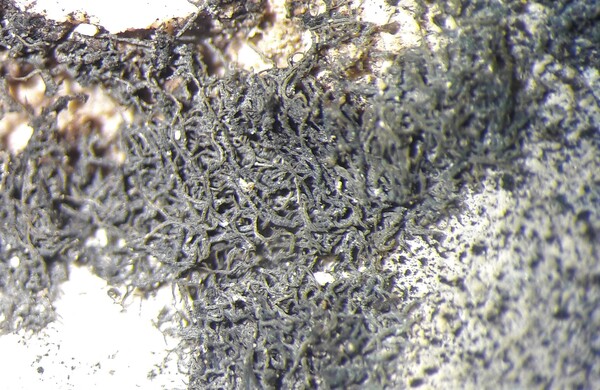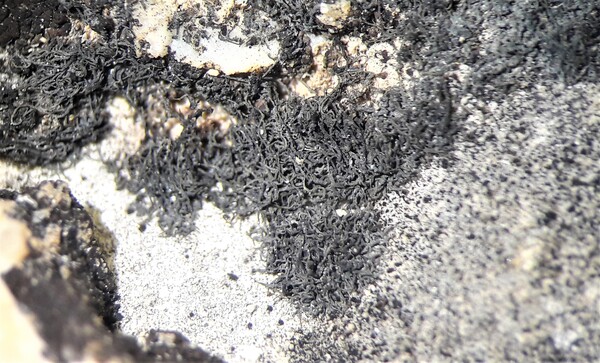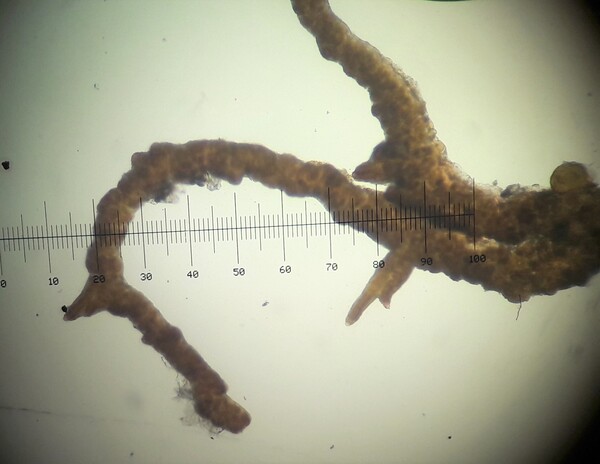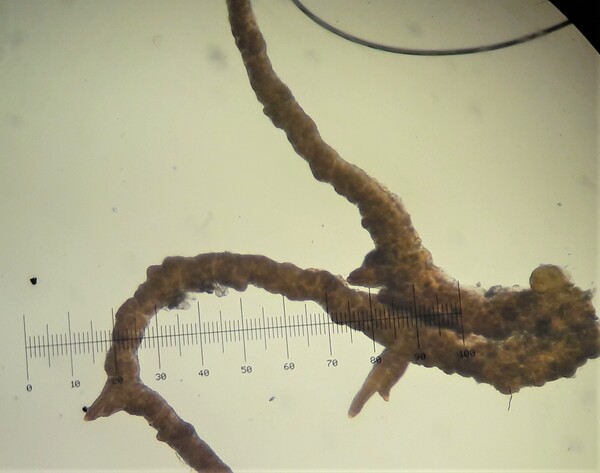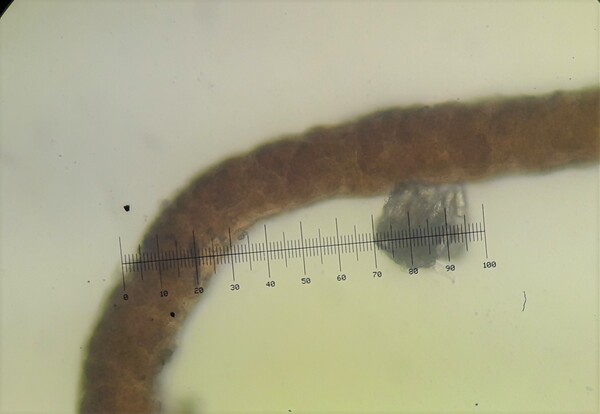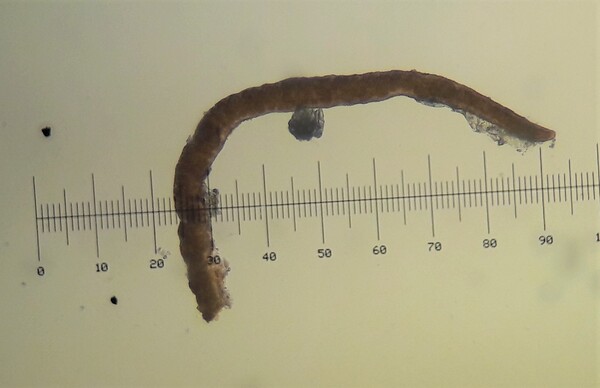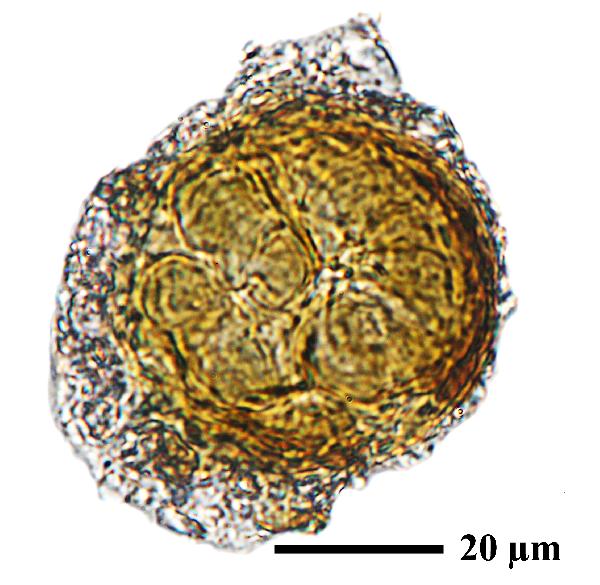Zahlbrucknerella calcarea (Herre) Zahlbr.
Cat. Lich. Univ., 2: 762, 1924. . Basionym: Zahlbrucknera calcarea Herre - Proc. Wash. Acad. Sc., 12: 129, 1910.
Synonyms: Ephebe lanata f. tenuis H. Magn.; Lecanephebe meylanii Frey
Distribution: N - Ven (Ravera & al. 2022b), TAA (Nascimbene & al. 2022). S - Cal.
Description: Thallus minutely filamentous, dark olive-green to olive-black, forming up to c. 2 cm wide rosettes or scattered, 0.5 mm tall and 0.5-1 mm wide tufts, the central parts of the rosettes often dying off. Filaments prostrate, attached by short hapters, often paired but with free and diverging tips, (30-)40-60 μm thick, mostly 1-2 mm long, tapering to a c. 10 μm thick point; older, basal filaments 60-110 μm thick, with a prominent, persistent, up to c. 25 μm thick basal strand of conglutinated, rectangular to roundish hyphal cells. Apothecia lecanorine, lateral on the filaments, to 0.4 mm across, with a concave to flat, dark brown to blackish disc, and a persistent thalline margin. Proper exciple absent; epithecium dark green to brown; hymenium colourless, 100-130 μm high, K/I+ blue-green; paraphyses straight, branched and anastomosing, 1.5-2 μm thick; hypothecium colourless, 10-50 μm high. Asci (8-)24(-32)-spored, cylindrical to clavate, thin-walled, without a tholus. Ascospores 1-celled, hyaline, subglobose to broadly ellipsoid, 6-12 x 5-8 μm. Pycnidia c. 0.2 mm wide, lateral on the filaments, the ostiolar region dark green to brown. Conidia 1-celled, hyaline, bacilliform, 3-5 x c. 1 μm. Photobiont cyanobacterial (Scytonema-like), the trichomes up to c. 6 μm thick at apex, with 10-12(-20) μm wide cells; trichomes with false branching, i.e. cell divisions exclusively anticlinal; when the trichome splits, the formerly connected ends start growing independently to form V-shaped branchings (visible at least in younger parts of the thallus). Spot tests: all negative. Chemistry: without lichen substances.Note: on limestone and dolomite, more rarely on basic siliceous rocks, in sheltered seepage tracks on steeply inclined surfaces; certainly more widespread, but never common in Italy. The name is often given as Zahlbrucknerella calcarea (Herre) Herre (1912), but Herre (1912) just re-named the genus, without making a formally valid new combination.
Growth form: Crustose
Substrata: rocks
Photobiont: cyanobacteria, filamentous (e.g. Nostoc, Scytonema)
Reproductive strategy: mainly sexual
On otherwise dry surfaces with short periods of water seepage after rain
Commonnes-rarity: (info)
Alpine belt: absent
Subalpine belt: extremely rare
Oromediterranean belt: extremely rare
Montane belt: very rare
Submediterranean belt: absent
Padanian area: absent
Humid submediterranean belt: absent
Humid mediterranean belt: absent
Dry mediterranean belt: absent
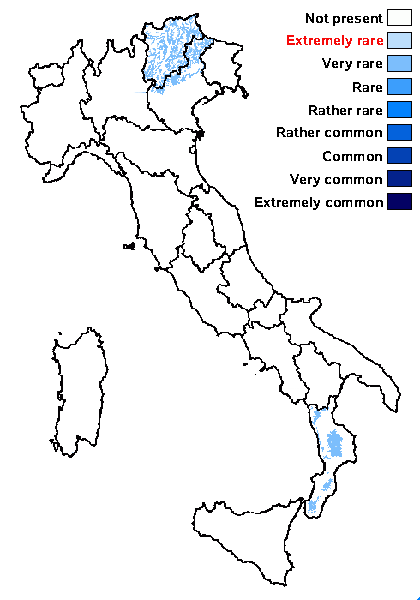
Predictive model
Herbarium samples
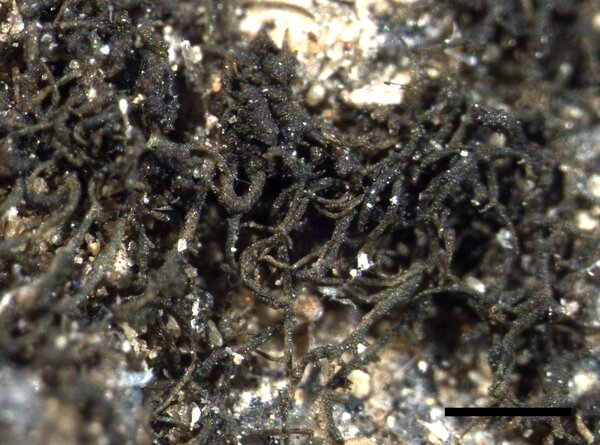

Elena Pittao; Owner: Department of Life Sciences, University of Trieste
Herbarium: TSB (20019)
15/02/2017
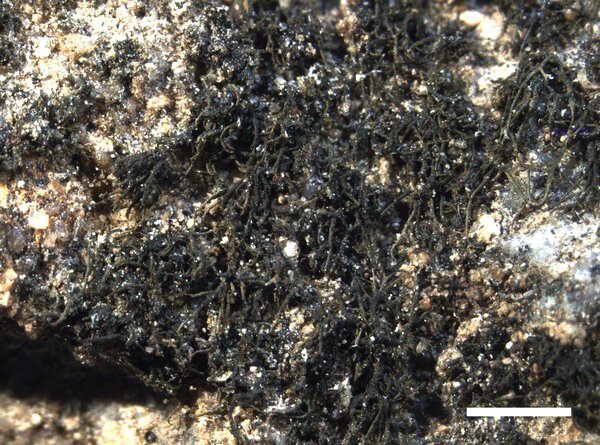

Elena Pittao; Owner: Department of Life Sciences, University of Trieste
Herbarium: TSB (20019)
15/02/2017
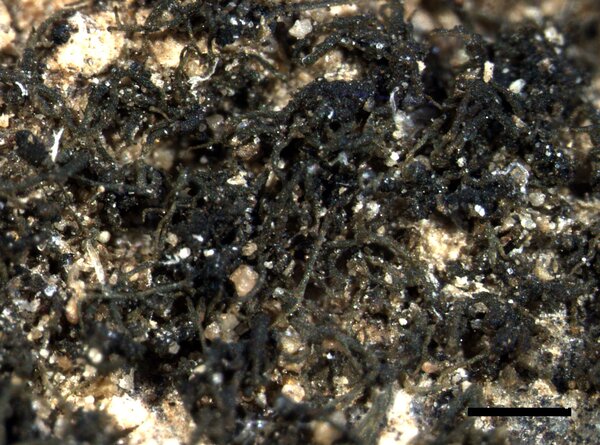

Elena Pittao; Owner: Department of Life Sciences, University of Trieste
Herbarium: TSB (20019)
15/02/2017
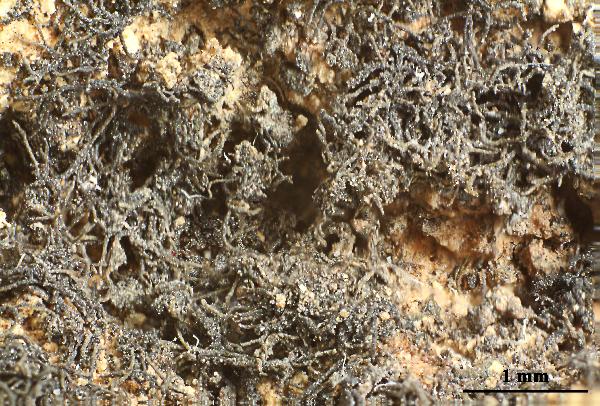

Felix Schumm - CC BY-SA 4.0
[ABL115], Turkey, Bitlis, Mutki, Balh köyü, 38°22’41.29’’ M,
41°38’52.68’’ E, 1462 m. Leg. K. Yazici (no 115), 19.08.2016, det. A.
Aptroot, 2017.
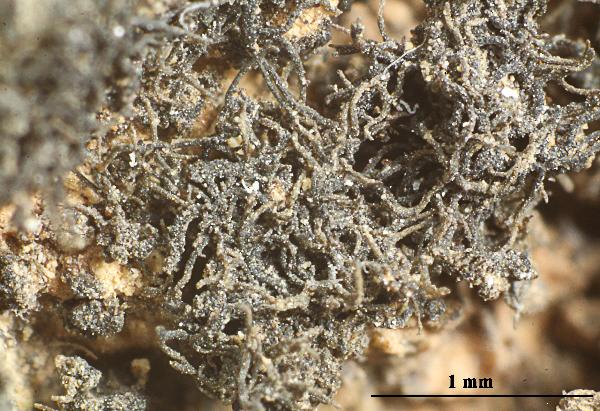

Felix Schumm - CC BY-SA 4.0
[ABL115], Turkey, Bitlis, Mutki, Balh köyü, 38°22’41.29’’ M,
41°38’52.68’’ E, 1462 m. Leg. K. Yazici (no 115), 19.08.2016, det. A.
Aptroot, 2017.
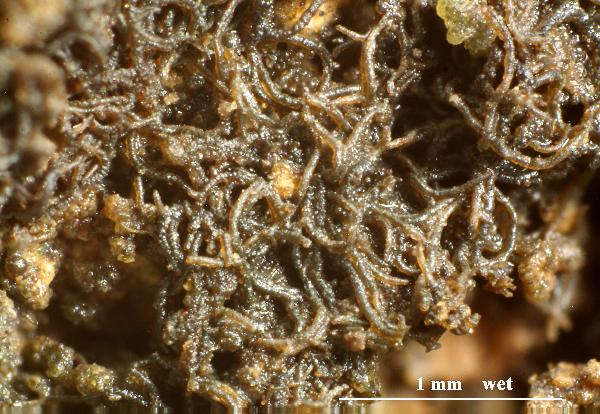

Felix Schumm - CC BY-SA 4.0
[ABL115], Turkey, Bitlis, Mutki, Balh köyü, 38°22’41.29’’ M,
41°38’52.68’’ E, 1462 m. Leg. K. Yazici (no 115), 19.08.2016, det. A.
Aptroot, 2017.
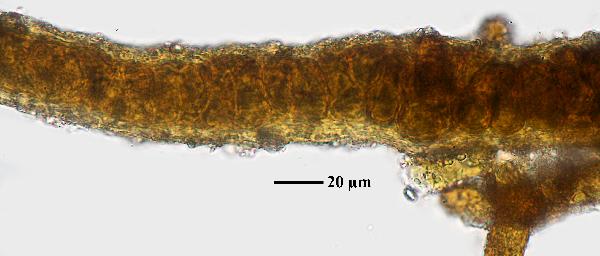

Felix Schumm - CC BY-SA 4.0
[ABL115], Turkey, Bitlis, Mutki, Balh köyü, 38°22’41.29’’ M,
41°38’52.68’’ E, 1462 m. Leg. K. Yazici (no 115), 19.08.2016, det. A.
Aptroot, 2017.
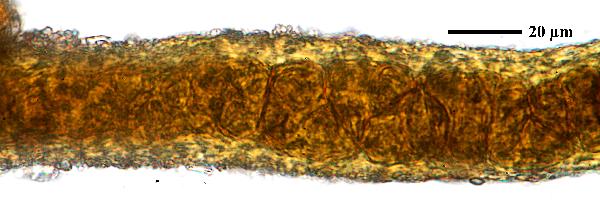

Felix Schumm - CC BY-SA 4.0
[ABL115], Turkey, Bitlis, Mutki, Balh köyü, 38°22’41.29’’ M,
41°38’52.68’’ E, 1462 m. Leg. K. Yazici (no 115), 19.08.2016, det. A.
Aptroot, 2017.
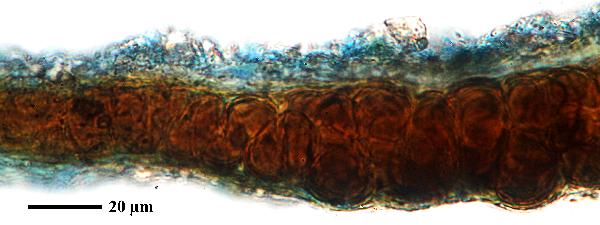

Felix Schumm - CC BY-SA 4.0
[ABL115], Turkey, Bitlis, Mutki, Balh köyü, 38°22’41.29’’ M,
41°38’52.68’’ E, 1462 m. Leg. K. Yazici (no 115), 19.08.2016, det. A.
Aptroot, 2017.
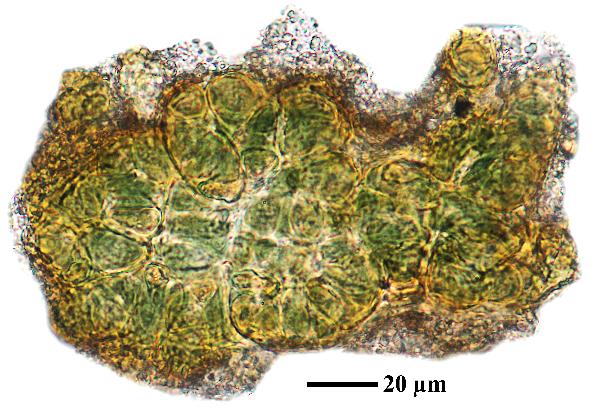

Felix Schumm - CC BY-SA 4.0
[ABL115], Turkey, Bitlis, Mutki, Balh köyü, 38°22’41.29’’ M,
41°38’52.68’’ E, 1462 m. Leg. K. Yazici (no 115), 19.08.2016, det. A.
Aptroot, 2017.
Growth form: Crustose
Substrata: rocks
Photobiont: cyanobacteria, filamentous (e.g. Nostoc, Scytonema)
Reproductive strategy: mainly sexual
On otherwise dry surfaces with short periods of water seepage after rain
Commonnes-rarity: (info)
Alpine belt: absent
Subalpine belt: extremely rare
Oromediterranean belt: extremely rare
Montane belt: very rare
Submediterranean belt: absent
Padanian area: absent
Humid submediterranean belt: absent
Humid mediterranean belt: absent
Dry mediterranean belt: absent

Predictive model
| Herbarium samples |


Elena Pittao; Owner: Department of Life Sciences, University of Trieste
Herbarium: TSB (20019)
15/02/2017


Elena Pittao; Owner: Department of Life Sciences, University of Trieste
Herbarium: TSB (20019)
15/02/2017


Elena Pittao; Owner: Department of Life Sciences, University of Trieste
Herbarium: TSB (20019)
15/02/2017


Felix Schumm - CC BY-SA 4.0
[ABL115], Turkey, Bitlis, Mutki, Balh köyü, 38°22’41.29’’ M, 41°38’52.68’’ E, 1462 m. Leg. K. Yazici (no 115), 19.08.2016, det. A. Aptroot, 2017.


Felix Schumm - CC BY-SA 4.0
[ABL115], Turkey, Bitlis, Mutki, Balh köyü, 38°22’41.29’’ M, 41°38’52.68’’ E, 1462 m. Leg. K. Yazici (no 115), 19.08.2016, det. A. Aptroot, 2017.


Felix Schumm - CC BY-SA 4.0
[ABL115], Turkey, Bitlis, Mutki, Balh köyü, 38°22’41.29’’ M, 41°38’52.68’’ E, 1462 m. Leg. K. Yazici (no 115), 19.08.2016, det. A. Aptroot, 2017.


Felix Schumm - CC BY-SA 4.0
[ABL115], Turkey, Bitlis, Mutki, Balh köyü, 38°22’41.29’’ M, 41°38’52.68’’ E, 1462 m. Leg. K. Yazici (no 115), 19.08.2016, det. A. Aptroot, 2017.


Felix Schumm - CC BY-SA 4.0
[ABL115], Turkey, Bitlis, Mutki, Balh köyü, 38°22’41.29’’ M, 41°38’52.68’’ E, 1462 m. Leg. K. Yazici (no 115), 19.08.2016, det. A. Aptroot, 2017.


Felix Schumm - CC BY-SA 4.0
[ABL115], Turkey, Bitlis, Mutki, Balh köyü, 38°22’41.29’’ M, 41°38’52.68’’ E, 1462 m. Leg. K. Yazici (no 115), 19.08.2016, det. A. Aptroot, 2017.


 INDEX FUNGORUM
INDEX FUNGORUM
 GBIF
GBIF
 DOLICHENS
DOLICHENS
